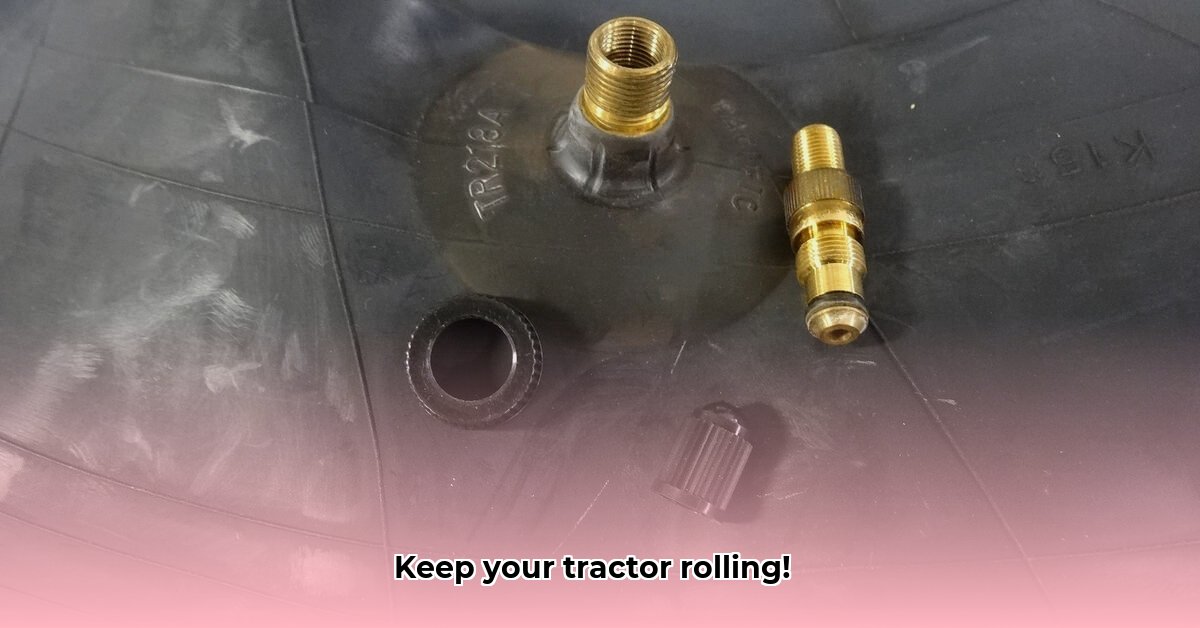
Maintaining your tractor's tires is crucial for efficient and safe operation. This guide focuses on the 11.2-28 tractor tire tube—a critical component often overlooked. We'll cover installation, maintenance, and troubleshooting, ensuring your tractor stays on the move. For more on tractor tire sizing, see this helpful guide: tractor tire sizes.
Understanding Your 11.2-28 Tractor Tire Tube
The 11.2-28 tire tube is the inflatable inner lining of your tire, providing the necessary pressure and shape. Its proper function is vital for efficient tractor operation. Using the incorrect size tube can lead to damage or failure. Remember, a damaged tube means downtime and potential costly repairs. Isn't preventing those repairs a worthwhile goal?
Compatibility and Tube Specifications
Before installation, verify compatibility. While designed for 11.2-28 tires, variations exist. Always consult your tractor's owner's manual. This manual will specify the correct tube type, ensuring optimal performance and longevity.
Check these key specifications:
- Precise Dimensions: Exact dimensions (length and diameter) must match your tire. Slight discrepancies can lead to issues.
- Material Composition: High-quality rubber compounds are essential for durability and puncture resistance. Look for details on the rubber's resistance to aging and wear.
- Maximum Pressure Rating: Never exceed the tube's maximum pressure rating. Over-inflation can cause rupture. Under-inflation impacts performance and tire wear. This rating is usually printed clearly on the tube.
Installing Your 11.2-28 Tractor Tire Tube: A Step-by-Step Process
Correct installation is crucial. A poorly installed tube increases the risk of flats and other problems. Follow these steps precisely:
- Preparation: Thoroughly clean the tire and rim to remove dirt and debris. This prevents accidental punctures during the installation.
- Tube Insertion: Gently and evenly insert the tube into the tire, ensuring the valve stem is properly aligned and accessible. Avoid pinching or twisting the tube.
- Tire Mounting: Carefully seat the tire bead onto the rim. Use tire irons if necessary, but proceed gently to prevent pinching the tube.
- Inflation and Leak Check: Inflate the tire slowly to the recommended pressure (found on the tire sidewall). Listen for hissing sounds, indicating a leak. Check the tire's bead for slippage.
Maintaining Your Tube for a Longer Lifespan
Regular maintenance prevents premature failure and extends the tube's lifespan. Remember, a small amount of preventative maintenance can save you immense time and money in the long run. Isn't this worth the effort?
- Visual Inspections: Regularly inspect for cuts, abrasions, bulges, or other damage. Address minor issues early to avoid major problems later.
- Consistent Inflation: Maintain the correct inflation pressure. Under-inflation leads to excessive wear, while over-inflation can cause rupture.
- Proper Storage: Store unused tubes in a cool, dark, and dry location, away from sharp objects.
Troubleshooting Common 11.2-28 Tube Problems
Even with proper care, issues might arise. This table summarizes common problems, causes, and solutions:
| Problem | Possible Cause | Solution |
|---|---|---|
| Slow Leak | Punctures, valve stem issues, improper seating | Inspect carefully; patch or replace if needed; check valve stem; remount if necessary. |
| Sudden Deflation | Major puncture, tube rupture | Tube replacement is likely required. |
| Uneven Tire Wear | Incorrect inflation, wheel alignment issues | Check and adjust tire pressure; consult a professional for wheel alignment. |
Remember, consistent maintenance greatly extends the life of your 11.2-28 tractor tire tube. This not only saves money but also minimizes downtime, ensuring your farm operations run smoothly.